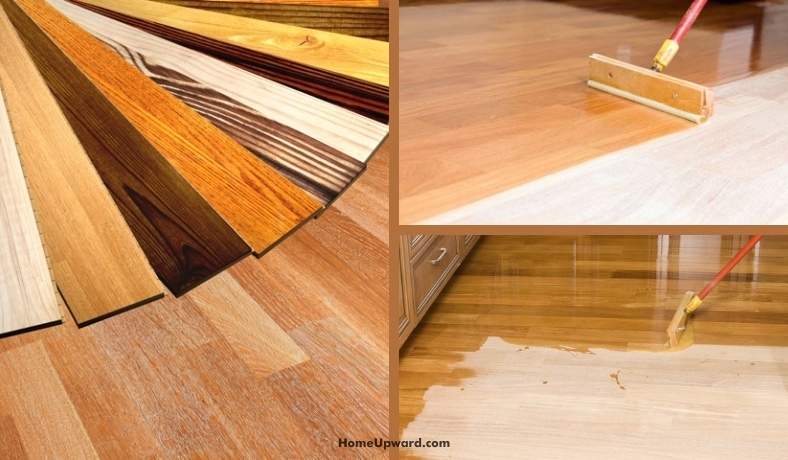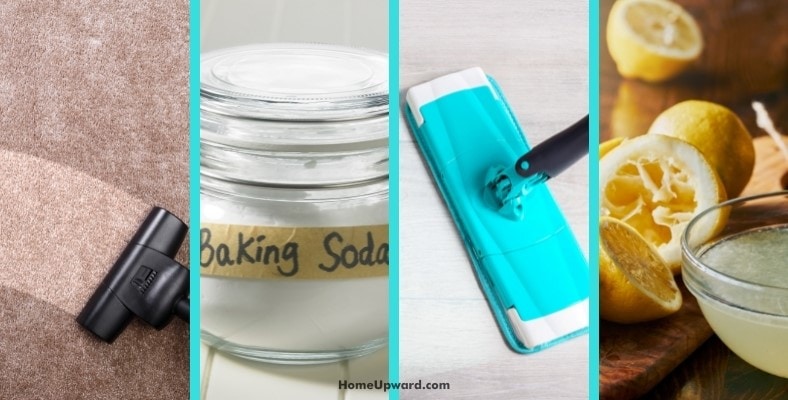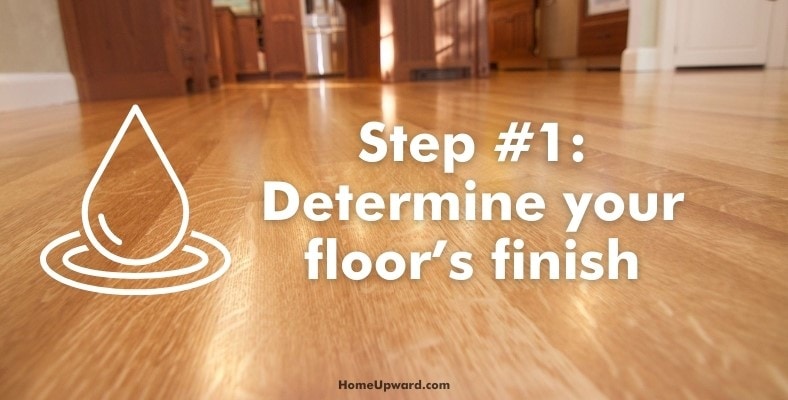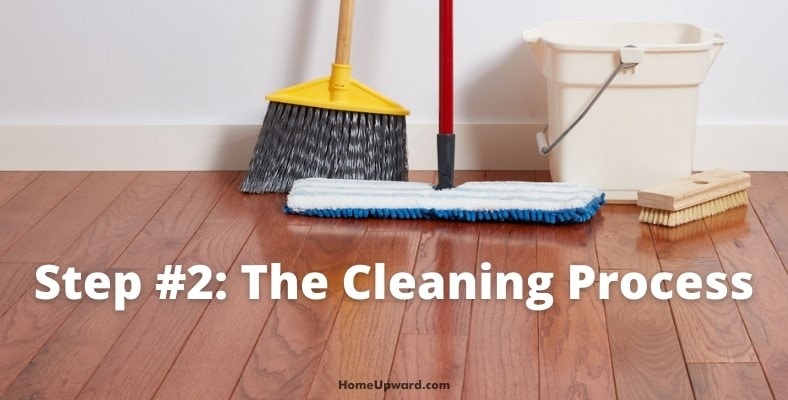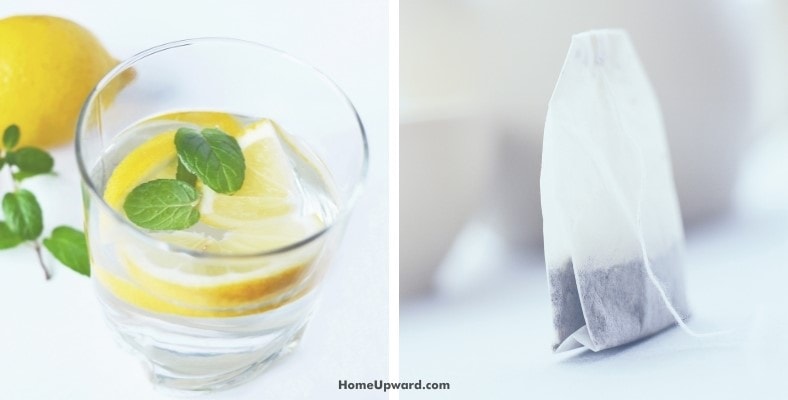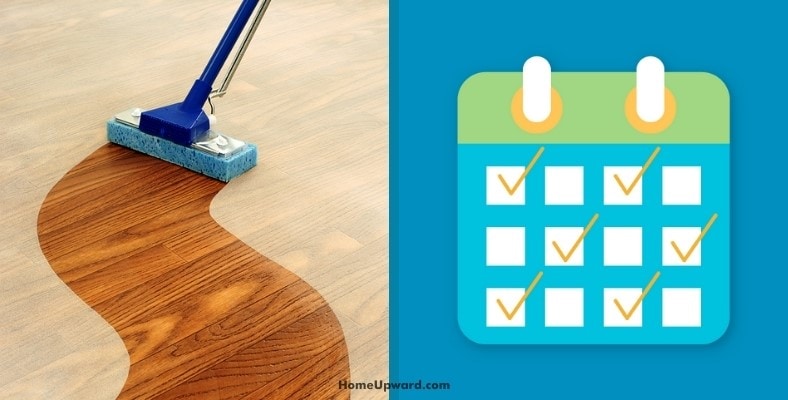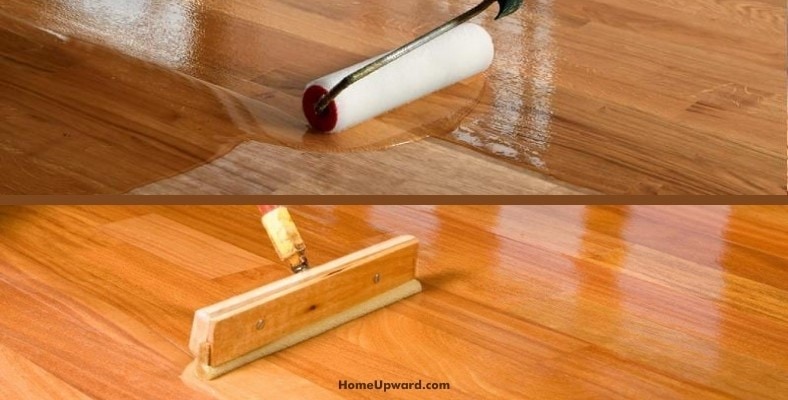Flooring with water-based polyurethane needs a different approach than other types of coated wood floors. Here’s what you need to know and a great how-to guide on cleaning this type of flooring the right way.
Contents
What Do You Clean Polyurethane With?
You may not need everything on the list. Read the instructions and decide.
- Electrostatic broom
- Electrostatic dust cloth
- Vacuum cleaner
- Microfiber mop
- Microfiber cloth (may come with the mop)
- pH-neutral water-based cleaner
- Baking soda
- Absorbent damp cloth (perhaps a baby diaper)
- Lemon juice
- Teabags
- Water
Cleaning Items to Avoid
While it’s often suggested, never apply ammonia or vinegar to clean hardwood. Pros who know how to clean water-based polyurethane floors have seen ingredients like these damage the finish.
Step #1: Determine Your Floor’s Finish
To ensure an appropriate cleaning, I’d want to know what finish your wood floor has. Modern hardwood floors have an acrylic or polyurethane coating. There are others but these finishes are usually requested.) Older floors may have no finish and only staining (i.e., no surface seal).
To figure out how to clean water-based polyurethane floors, I suggest conducting a test.
On an inconspicuous section of the floor, place a few drops of water. After 60 seconds, see if the beads of water are still in place or if they’ve soaked into the wood, darkening the surface.
Unfinished hardwood will have sopped up the drops. You’re looking at a process that’s going to be a challenge. If droplets are intact, you have a finish of polyurethane that’s durable and cleaned easily.
Step #2: The Cleaning Process
The modern wood floor is easier to maintain. If the installation is top-notch, dirt and spills don’t stay on the surface. Good installs include sealants that stop moisture from penetrating the wood.
Still, understanding how to clean water-based polyurethane floors is knowing they can be subject to dust. That’s because the finish uses an oil-based poly that allows debris to cling to surfaces.
Removing Debris
Get rid of the dirt and dust. Get your electrostatic broom — your dust magnet! It grabs pollutants efficiently without needing to run over areas multiple times. You could also use a vacuum cleaner. But the attachment needs long bristles. The metal shouldn’t come in contact with floors.
You may find stubborn areas where dust wrestles for its territory. Consider wiping these areas with your electrostatic dust cloth. These solutions are pretty good at getting to debris the average vacuum won’t pick up.
Mop Up Stains
Get your microfiber mop, one designed for hardwood flooring, and the water-based cleaner that’s pH neutral. You can also consider baking soda and water to loosen and remove dirt and grease.
Whatever cleaning foundation you go with, dilute the product sufficiently. A polyurethane wood floor requires a mild cleaning agent.
Soak the mop in the cleaner and wring it good. If you have marks or stains that won’t come out, dip the non-abrasive cloth in a mild mix of water and hardwood floor cleaner. With a minimal amount of pressure, scrub the spot(s) clean.
Stay off the floor until it’s completely dried.
Step #3: Buff It Up!
Buffing isn’t a necessary step but if you want to get a nice shine on your wood floor, when it comes to knowing how to clean water-based polyurethane floors, buffing is the way to go.
You want a soft, damp cloth. Something absorbent. I use a cloth baby diaper.
- Take lemon juice and mix it with water. Dampen the cloth with the blend and buff the floor.
- Boil the teabags in water. After the water gets lukewarm, dip the cloth. Squeeze away excess water. Now use it to buff the flooring.
How Often Should You Clean and Vacuum Hardwood Floors?
To keep the shine and water-based finish that you love, I’d suggest a good vacuuming at least once a week and a wet cleaning every four to eight weeks (depending on foot traffic).
How Do You Get Water Stains Out of Polyurethane?
Take denatured alcohol and dampen a microfiber cloth. Gently wipe the area. Do not over-soak the cloth. You want a cloth dampened enough to give the appearance of a comet’s tail, letting the alcohol evaporate as you wipe.
Can Polyurethane Floors Be Recoated?
Yes, they can, but you have to remember to recoat polyurethane floors with a new polyurethane layer. Wax or acrylic coatings will reject the new layer. You may have to remove the original coating before you can add a water-based poly layer.
Precautions for Newly Finished Floors
Here’s what to do to preserve your finished flooring.
- Don’t walk on hardwood floors in spiked shoes or stilettos.
- Hot or cold water aren’t good to use with hardwood. They can warp the wood. Hot water will leave a dulled floor finish.
- Never use a soaking cloth or mop on a polyurethane finish. Excess moisture will ruin the finish or damage the surface.
- Never leave damp or moist items on the floor. This includes shoes, towels, rugs, mats, etc.
- Never apply harsh cleaners or abrasive tools to hardwood.
- Stay away from wax, citrus, and oil-based poly cleansers.
- Don’t forget to clean the floor regularly. Otherwise, the wood will develop a worn, old look early.

